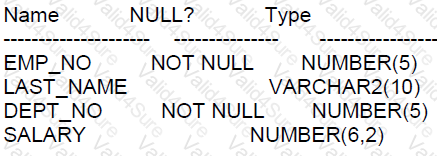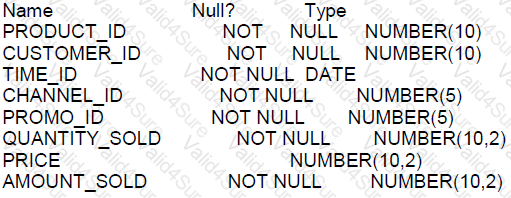1z0-071 Exam Dumps - Oracle Database 12c SQL
Examine the description of the EMPLOYEES table:

You write this failing statement:
SELECT dept_no AS department_id, MAX (salary) As max_sal
FROM employees
WHERE salary >10000
GROUP BY department_id
ORDER BY max_sal;
Which clause causes the error?
Which statements are true regarding primary and foreign key constraints and the effect they can have on table data?
Examine the description of the SALES table:

The SALES table has 5,000 rows.
Examine this statement:
CREATE TABLE sales1 (prod id, cust_id, quantity_sold, price)
AS
SELECT product_id, customer_id, quantity_sold, price
FROM sales
WHERE 1=1
Which two statements are true?
Examine this statement:
SELECT last name
FROM employees
ORDER BY CASE WHEN salary = (SELECT MAX(salary) FROM employees)
THEN ‘A’
ELSE last_ name
END ,last_name DESC;
Which two statements are true?